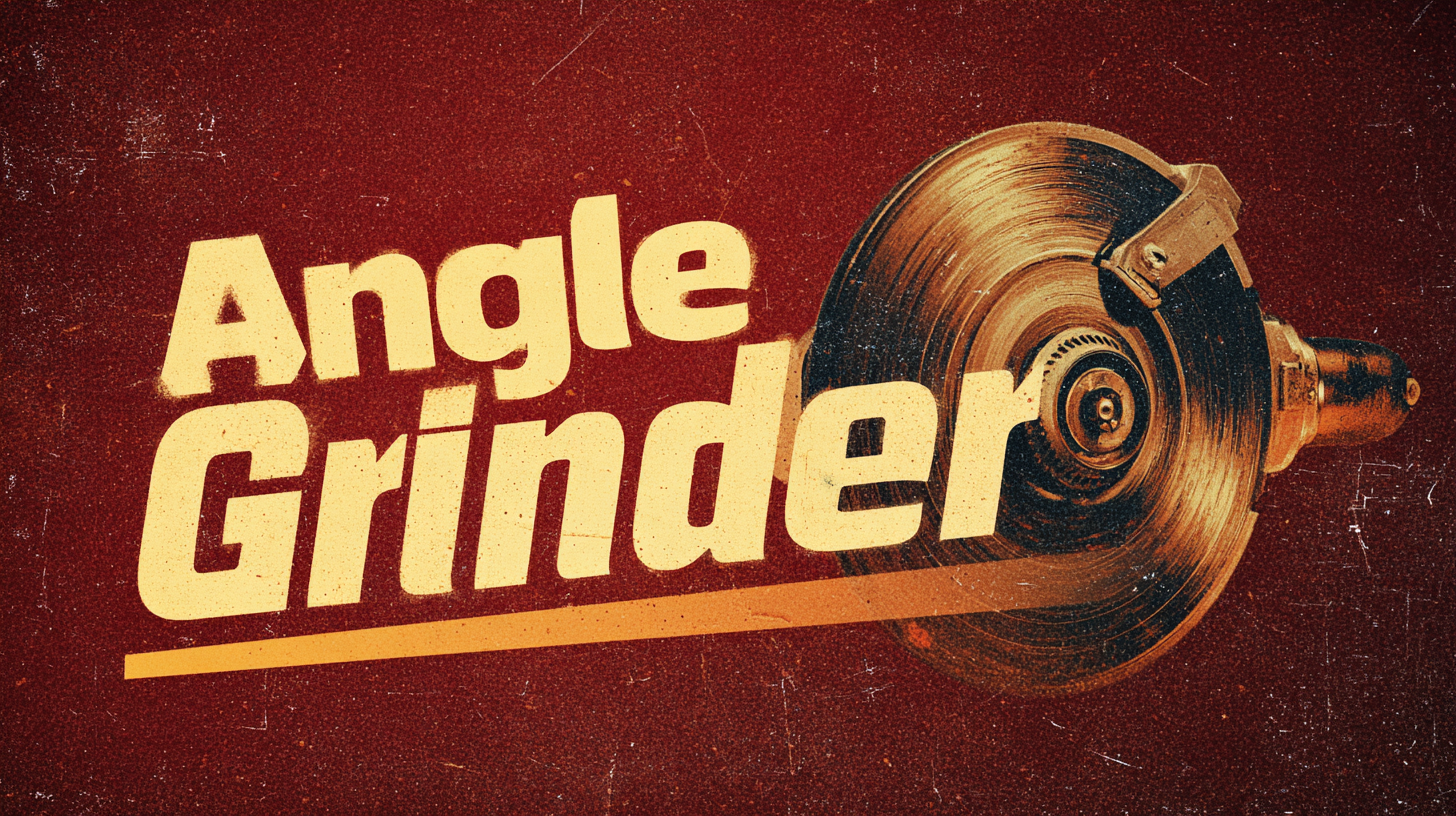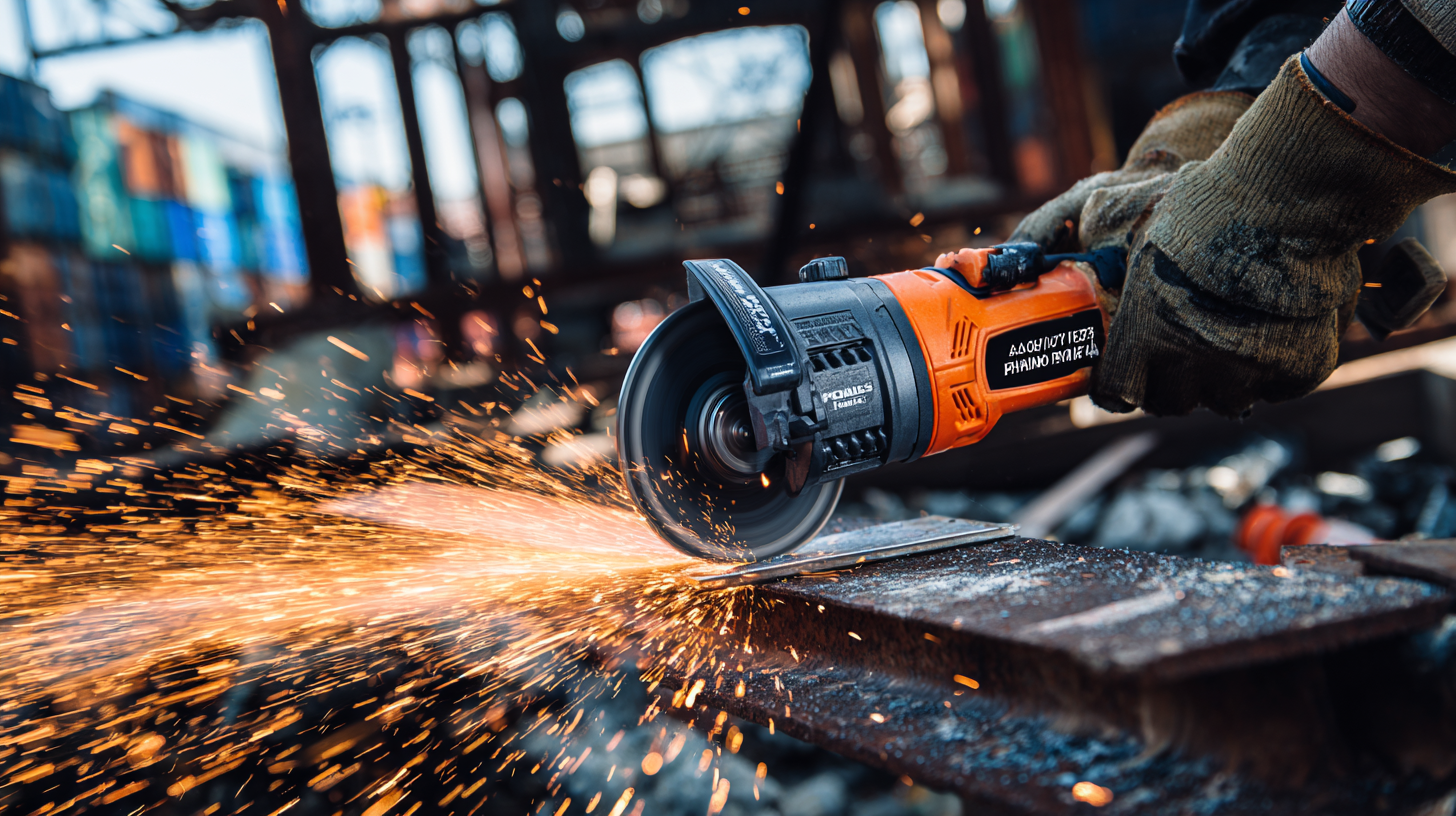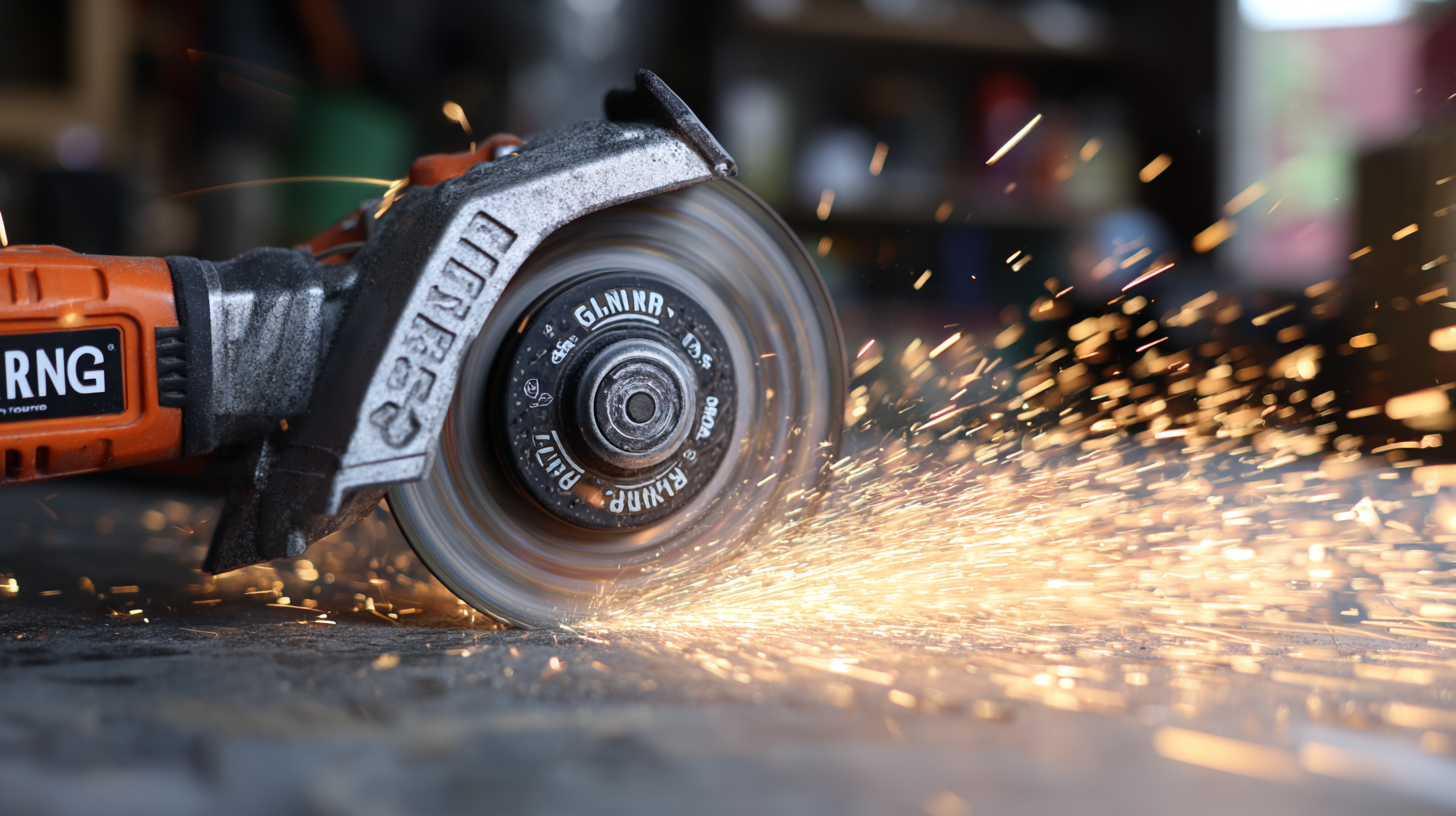


When it comes to tackling various DIY projects or professional tasks, choosing the right tool can significantly impact both efficiency and outcome. Among the essential tools in any craftsman’s arsenal is the angle grinder, renowned for its versatility in grinding, cutting, and polishing tasks. According to the latest industry reports, the global angle grinder market is projected to reach $3 billion by 2025, growing at a CAGR of 6.5% due to increasing demand across construction and metalworking sectors. This growing reliance on angle grinders signifies the importance of selecting the best model for your needs. As we delve into the ultimate guide for choosing the best angle grinder, this checklist will equip you with key considerations to ensure you make an informed decision, maximizing both performance and safety for your projects.

When it comes to choosing the right angle grinder for your projects, understanding the different types available is crucial. There are primarily three types of angle grinders: corded, cordless, and pneumatic. Corded models provide consistent power and are typically more reliable for heavy-duty tasks, making them ideal for professional use. Cordless grinders, on the other hand, offer unmatched portability, allowing you to work in remote locations without the hassle of tangled cords. However, they might sacrifice some power and runtime, so choosing the right battery type is essential. Pneumatic grinders are excellent for those who already have a compressed air setup, delivering high power for various tasks but requiring extra equipment.
Each type of angle grinder comes with its own set of key features to consider. Look for grinders with adjustable speed settings, as they allow for versatility across different materials and applications. Additionally, features such as paddle switches for better control, anti-vibration handles for comfort during extended use, and safety guards for protection are vital. As you assess your needs and the tasks at hand, taking the time to understand these distinctions will lead you to the perfect angle grinder tailored for your specific projects.
When it comes to selecting the right size angle grinder for your specific projects, understanding the relationship between power and usability is crucial. Industry data indicates that the most commonly used size for DIY and professional tasks is the 4.5-inch grinder, which strikes an optimal balance between power and portability. According to a recent report by the American National Standards Institute (ANSI), this size is not only lightweight but also versatile enough to handle a variety of materials, making it an ideal choice for tasks ranging from metalworking to stone cutting.
For more heavy-duty applications, such as construction or industrial work, 7-inch grinders are recommended. These models typically offer higher wattage and can handle larger grinding wheels, providing the necessary torque to tackle tougher materials. The National Institute for Occupational Safety and Health (NIOSH) highlights that using a size appropriate for the task at hand can significantly reduce operator fatigue and improve safety. Choosing the right angle grinder size is vital in maximizing efficiency while minimizing risks associated with improper tool usage.
When optimizing the performance of your angle grinder, selecting the right accessories is crucial. One of the most essential accessories is the grinding disc. Available in various materials such as aluminum oxide and zirconia, each type serves specific purposes. For instance, aluminum oxide discs are perfect for general-purpose grinding on metals, while zirconia discs are ideal for tougher materials. Additionally, using the appropriate grit size can significantly affect the efficiency and outcome of your project; finer grits are suitable for finishing, while coarser grits accelerate material removal.
Another important accessory to consider is the dust shroud. This attachment not only helps maintain a cleaner workspace by capturing debris but also protects you from inhaling harmful dust particles. Pairing your angle grinder with a quality dust extractor can further enhance safety and prolong the life of your tool. Don't overlook the benefits of using attachments like wire brushes and flap discs as well. These tools allow for versatility, enabling you to tackle everything from rust removal to surface preparation, ultimately elevating your DIY projects to a professional level.

When working with angle grinders, safety should always be your top priority. These powerful tools are incredibly versatile, but their misuse can lead to severe injuries. First and foremost, always wear appropriate personal protective equipment (PPE), including safety goggles, gloves, and hearing protection. Ensure your workspace is clean and organized to prevent accidents, and make sure no flammable materials are nearby. Additionally, familiarize yourself with the specific features of your angle grinder, including safety guards and power controls, to use it efficiently and minimize risk.
Before you begin your project, prepare adequately by selecting the right disc for the task at hand. Using the wrong attachment can increase the chances of kickback or breakage. Always operate the grinder at the recommended speed for the selected disc and maintain a firm grip on the tool. Position yourself in a stable stance and avoid awkward body positions that could lead to loss of control. By following these best practices, you can effectively manage the risks associated with angle grinders while maximizing their utility for your projects.
When it comes to maintaining and caring for your angle grinder, proper upkeep is crucial to extending its lifespan and ensuring optimal performance. According to a report by the American National Standards Institute (ANSI), improper tool maintenance can lead to a staggering 30% reduction in tool life. This statistic underscores the importance of routine care and attention.
Regularly cleaning the air vents and replacing the carbon brushes can prevent overheating and excessive wear, which are common issues that contribute to early tool failure.
Additionally, lubricating the moving parts is essential for smooth operation. A study conducted by the International Journal of Mechanical Engineering highlighted that tools maintained with proper lubrication not only function more efficiently but also have an increased lifespan of up to 25%. It's also vital to inspect the power cord and switch regularly to avoid electrical hazards that could damage your grinder or pose safety risks. By prioritizing these maintenance practices, you can ensure your angle grinder remains a reliable partner in your projects for years to come.
